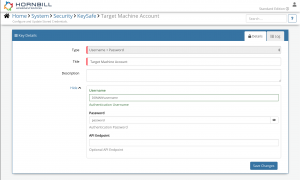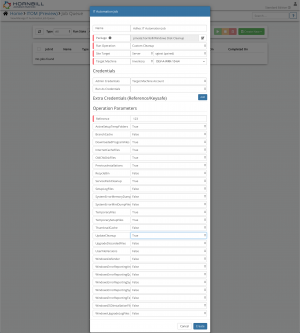Difference between revisions of "Windows Disk Cleanup"
| Line 1: | Line 1: | ||
{{bluebanner|[[Main_Page|Home]] > [[Administration]] > [[IT_Operations_Management|IT Operations Management]] > [[ITOM_Package_Library|ITOM Package Library]] > Windows Disk Cleanup|[[:Category:ITOM|Index]]}} | {{bluebanner|[[Main_Page|Home]] > [[Administration]] > [[IT_Operations_Management|IT Operations Management]] > [[ITOM_Package_Library|ITOM Package Library]] > Windows Disk Cleanup|[[:Category:ITOM|Index]]}} | ||
| − | [[File:microsoft_logo | + | [[File:microsoft_logo.png|300px]] |
{{IntroAndLinks|The Windows Disk Cleanup package for Hornbill's IT Operations Management (ITOM) contains an operation to automate the execution of the Windows Disk Cleanup tool on target machines. | {{IntroAndLinks|The Windows Disk Cleanup package for Hornbill's IT Operations Management (ITOM) contains an operation to automate the execution of the Windows Disk Cleanup tool on target machines. | ||
| | | | ||
Revision as of 08:44, 8 September 2021
| Home > Administration > IT Operations Management > ITOM Package Library > Windows Disk Cleanup | Index |
IntroductionThe Windows Disk Cleanup package for Hornbill's IT Operations Management (ITOM) contains an operation to automate the execution of the Windows Disk Cleanup tool on target machines. |
|
Target Environment Requirements
Script Execution Machine Requirements
- If the script execution policy on the machine executing these operations is set to Restricted, then this will need to be updated to something less restrictive. See the PowerShell Documentation for more information.
KeySafe Configuration
When creating SIS jobs for operations contained within this package, they need to be run on the target machine as a user who has the correct privileges on the target.
To configure your Target Machine account authentication in KeySafe:
- In the Admin console, navigate to: System > Security > KeySafe;
- Click on + then select
Username + Password; - Give the KeySafe Key a Title (this is the name/identifier for the target machine account as you will see it when creating an IT Automation Job, or adding an IT Automation node to a Business Process or Runbook);
- Optionally add a description;
- Populate the Username field with the domain/local account username for the account being used on the target machine;
- Populate the Password field with the password for the above account;
- Select Create Key to save.
Once you have created your KeySafe Key, you can then use it when creating IT Automation Jobs from this package. See screenshots to the right for examples.
Package Operations
The Windows Disk Cleanup package contains the following operations, than can be used to create ITOM Jobs directly, or included in your Business Processes and/or IT Operations Management Rubooks.
Custom Cleanup
This operation will create a cleanup profile in the target machines registry, and use that profile when executing the Windows Disk Cleanup tool. See the Windows Disk Cleanup Tool documentation for more information on the Input Parameters, below.
Extra Credentials
None required.
Input Parameters
Reference(MANDATORY) - The Reference number for the new disk cleanup profile in the Windows Registry, should contain an integer value from 0 to 65535. NOTE: If there is a disk cleanup profile with the same reference that already exists in the registry of the target machine, then that profile will be overwritten by what is specified in this job.ActiveSetupTempFoldersBranchCacheDownloadedProgramFilesInternetCacheFilesOldChkDskFilesPreviousInstallationsRecycleBinServicePackCleanupSetupLogFilesSystemErrorMemoryDumpFilesSystemErrorMiniDumpFilesTemporaryFilesTemporarySetupFilesThumbnailCacheUpdateCleanupUpgradeDiscardedFilesUserFileVersionsWindowsDefenderWindowsErrorReportingArchiveFilesWindowsErrorReportingQueueFilesWindowsErrorReportingSystemArchiveFilesWindowsErrorReportingSystemQueueFilesWindowsErrorReportingTempFilesWindowsESDInstallationFilesWindowsUpgradeLogFiles
Output Parameters
warnings- Any warnings returned by the operation.


